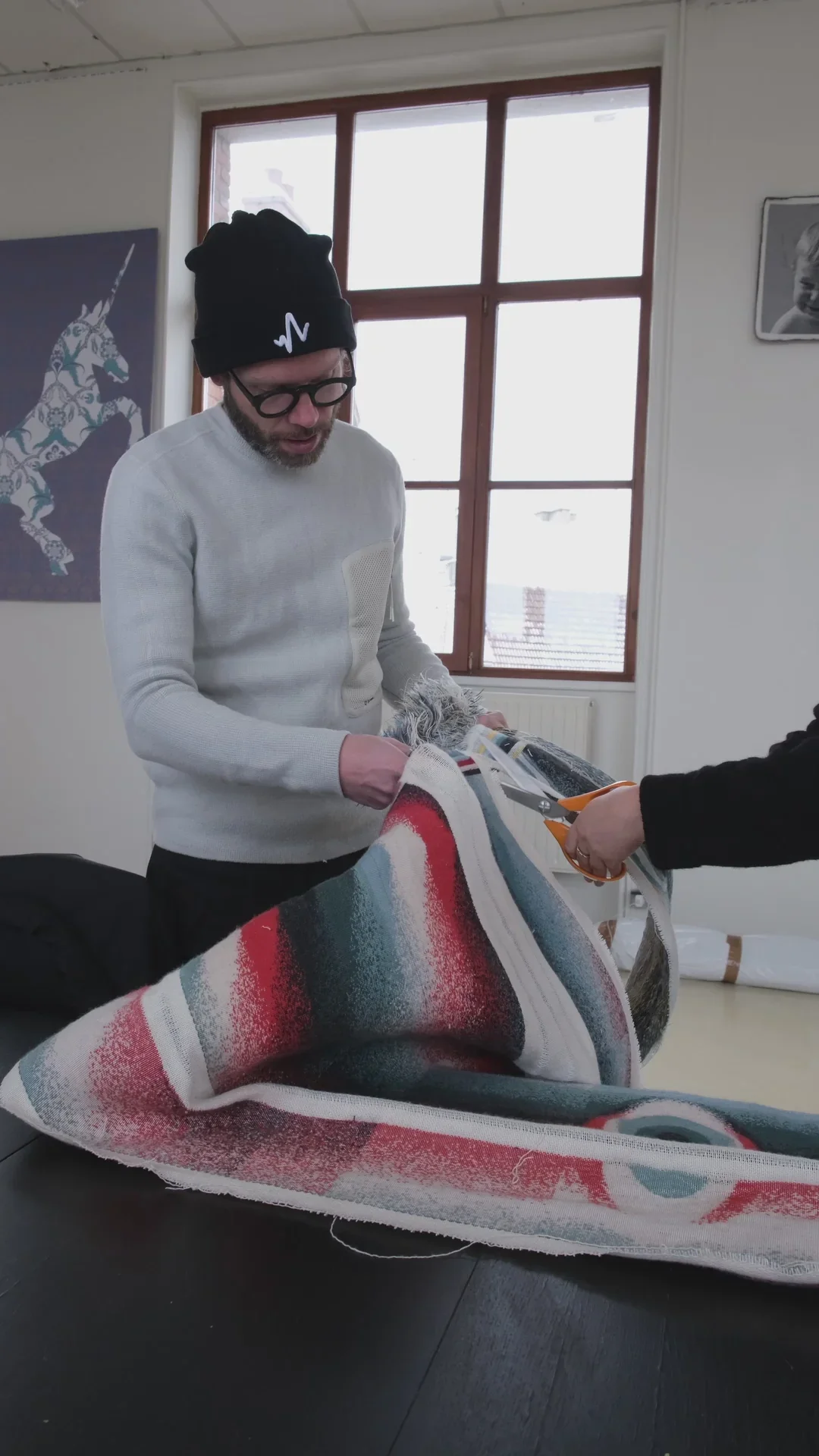Alexis André: sparkling code, care and craft
Alexis André is a French artist and researcher who has lived in Tokyo for nearly two decades, building a body of work that treats code as both instrument and collaborator. His connection to my birthplace, and his own experience as a third culture kid, made our friendship develop effortlessly.
I admire his work ethic as much as I admire his oeuvre: his pieces sparkle like the view of Tokyo Bay from a high rise.
His use of color bears the mark of a true aesthete, and his outlook is that of a disruptor: bold, experimental, worldly. André explores how systems can create moments of resonance: playful, meditative, sometimes mournful, but always human.
Code as craft
Alexis’s practice is rooted in Processing and interactive art, and his career has spanned collaborations with ISSEY MIYAKE and Jean-Michel Jarre, including the generative music and visual app EoN. But what distinguishes him is not technical range alone: it is his approach to code as craft.
His ethos is materialized and woven into Navette (2023), a collaboration between Art Blocks, TRAME, and Crypto Packaged Goods. The project consisted of 200 on-chain generative artworks, eight of which were translated into loom-woven tapestries by French atelier Néolice. Here, André’s algorithms do not remain screen-bound; they become tactile, woven into the warp and weft of a centuries-old tradition. It is an act of bridging — digital possibility and material presence, glitch and stitch, the future and the handmade.
time as poetry
Time recurs as a central theme. In 720 Minutes (2021), he produced 720 unique generative clocks, each marking a single minute across twelve hours. Every work activates only on its assigned minute, a fleeting spectacle that appears twice a day. The piece turns timekeeping into poetry; a reminder of how one minute can be both banal and monumental.
humanity in the digital age
In Departed (2022), André moves into more existential terrain. The project reflects on grief, helplessness, and the distance imposed by digital mediation during moments of loss. Layers of texture, color, and form create shifting compositions that mirror both the chaos of mourning and the fragile beauty of memory. The series evolved into Décorés and L’Appel, where organic and figurative forms shimmer in gold and silver, blurring cellular organisms with celestial bodies. In these works, André asks what remains when presence collapses into absence — what form, what trace, what resonance.
Community and collaboration
Not all of André’s work is solemn. Play runs through his practice as both method and philosophy. His collaboration with Erick Calderon (Snowfro) on Friendship Bracelets (2022) stands as one of the most widely distributed generative art projects to date. Pairing algorithmically designed embroidery patterns with accessible craft materials, the project embodied Art Blocks’ ethos of community and generosity. It was at once a conceptual artwork, a token of belonging, and a playful reimagining of generative art as shared ritual. It is joyful, from its concept to its output: it shimmers, moves and weaves right in front of your eyes.
infinitely infinitesimal
Other projects, such as Obicera, reflect André’s fascination with scale–from the infinitely small to the infinitely vast.
His works are often structured as systems where repetition, randomness, and variation generate forms that can feel architectural one moment and microscopic the next. This elasticity of scale is key to his visual language: an oscillation between control and chance, order and rupture.
lyrical systems
Across his oeuvre, André’s work resists the reductive framing of generative art as technical spectacle. Instead, he insists on its human poetics.
Code becomes a way to explore grief, community, play, and time: subjects that long predate the digital. His systems are never cold. They are frameworks for feeling, engines of variation designed to remind us that even in loops, glitches, and grids, there is care, humor, and humanity.
Alexis André is not interested in using generative art to simulate life.
He uses it to reveal something deeper: that structure and chance, woven together, can illuminate the spaces between us… the minutes we overlook, the losses we carry, the joys we share.














